Refine search
Actions for selected content:
8126 results in Fluid dynamics and solid mechanics

Closure Strategies for Turbulent and Transitional Flows
-
- Published online:
- 06 July 2010
- Print publication:
- 21 February 2002
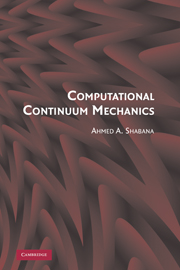
Computational Continuum Mechanics
-
- Published online:
- 06 July 2010
- Print publication:
- 10 March 2008
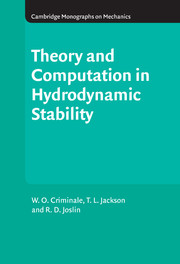
Theory and Computation of Hydrodynamic Stability
-
- Published online:
- 06 July 2010
- Print publication:
- 23 October 2003
OPTIMAL FILTERING IN DISCRETE-TIME SYSTEMS WITH TIME DELAYS AND MARKOVIAN JUMP PARAMETERS
- Part of
-
- Journal:
- The ANZIAM Journal / Volume 51 / Issue 2 / October 2009
- Published online by Cambridge University Press:
- 18 June 2010, pp. 218-233
-
- Article
-
- You have access
- Export citation
SCATTERING OF MEMBRANE COUPLED GRAVITY WAVES BY PARTIAL VERTICAL BARRIERS
- Part of
-
- Journal:
- The ANZIAM Journal / Volume 51 / Issue 2 / October 2009
- Published online by Cambridge University Press:
- 08 June 2010, pp. 241-260
-
- Article
-
- You have access
- Export citation
MAGNETOHYDRODYNAMIC FLOW OF A MICROPOLAR FLUID IN A CIRCULAR PIPE WITH HALL EFFECTS
- Part of
-
- Journal:
- The ANZIAM Journal / Volume 51 / Issue 2 / October 2009
- Published online by Cambridge University Press:
- 04 June 2010, pp. 277-285
-
- Article
-
- You have access
- Export citation
OPTIMAL EXERCISE PRICE OF AMERICAN OPTIONS NEAR EXPIRY
- Part of
-
- Journal:
- The ANZIAM Journal / Volume 51 / Issue 2 / October 2009
- Published online by Cambridge University Press:
- 02 June 2010, pp. 145-161
-
- Article
-
- You have access
- Export citation
A TIME-FUEL OPTIMAL CONTROL PROBLEM OF A CRUISE MISSILE BASED ON AN IMPROVED SLIDING MODE VARIABLE STRUCTURE MODEL
- Part of
-
- Journal:
- The ANZIAM Journal / Volume 51 / Issue 2 / October 2009
- Published online by Cambridge University Press:
- 02 June 2010, pp. 261-276
-
- Article
-
- You have access
- Export citation
AN EFFICIENT COMPUTATIONAL APPROACH TO A CLASS OF MINMAX OPTIMAL CONTROL PROBLEMS WITH APPLICATIONS
- Part of
-
- Journal:
- The ANZIAM Journal / Volume 51 / Issue 2 / October 2009
- Published online by Cambridge University Press:
- 20 May 2010, pp. 162-177
-
- Article
-
- You have access
- Export citation
THE LARGE-TIME SOLUTION OF A NONLINEAR FOURTH-ORDER EQUATION INITIAL-VALUE PROBLEM I. INITIAL DATA WITH A DISCONTINUOUS EXPANSIVE STEP
- Part of
-
- Journal:
- The ANZIAM Journal / Volume 51 / Issue 2 / October 2009
- Published online by Cambridge University Press:
- 18 May 2010, pp. 178-190
-
- Article
-
- You have access
- Export citation

Non-Classical Continuum Mechanics
- Proceedings of the London Mathematical Society Symposium, Durham, July 1986
-
- Published online:
- 11 May 2010
- Print publication:
- 24 September 1987
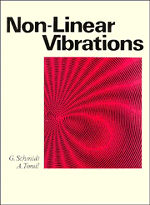
Non-linear Vibrations
-
- Published online:
- 10 May 2010
- Print publication:
- 13 March 1986
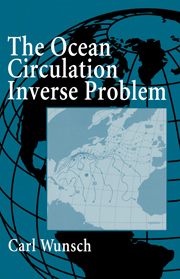
The Ocean Circulation Inverse Problem
-
- Published online:
- 07 May 2010
- Print publication:
- 13 June 1996

Hydrodynamics of Ship Propellers
-
- Published online:
- 07 May 2010
- Print publication:
- 16 December 1993
DETERMINISTIC AND STOCHASTIC MODELS FOR THE SPREAD OF CHOLERA
-
- Journal:
- The ANZIAM Journal / Volume 51 / Issue 2 / October 2009
- Published online by Cambridge University Press:
- 05 May 2010, pp. 234-240
-
- Article
-
- You have access
- Export citation

Theory of Laminar Flames
-
- Published online:
- 05 May 2010
- Print publication:
- 29 July 1982
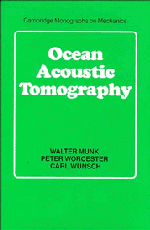
Ocean Acoustic Tomography
-
- Published online:
- 04 May 2010
- Print publication:
- 30 June 1995

A Modern Introduction to the Mathematical Theory of Water Waves
-
- Published online:
- 04 May 2010
- Print publication:
- 28 October 1997
81 - The Thermodynamics of Mises–Hill Plasticity
- from PART XIII - THEORY OF ISOTROPIC PLASTIC SOLIDS UNDERGOING SMALL DEFORMATIONS
-
- Book:
- The Mechanics and Thermodynamics of Continua
- Published online:
- 05 June 2012
- Print publication:
- 19 April 2010, pp 469-478
-
- Chapter
- Export citation
45 - Compressible, Viscous Fluids
- from PART IX - THE MECHANICAL THEORY OF COMPRESSIBLE AND INCOMPRESSIBLE FLUIDS
-
- Book:
- The Mechanics and Thermodynamics of Continua
- Published online:
- 05 June 2012
- Print publication:
- 19 April 2010, pp 250-258
-
- Chapter
- Export citation
